There are a number of different users and audiences who will be interested in Devil's Canyon's overclocking characteristics. Some people will be interested in the maximum 24/7-stable overclock they can achieve with no more than a voltage and multiplier bump. Other users will search for an optimal balance between core frequency an operating voltage.
Furthermore, there will be those who are interested in nothing but raw performance and maximum clocks, irrelevant of heat and CPU lifespan.
We will overclock Devil's Canyon in a number of manners to analyse our sample's important characteristics and tendencies, such as: increased voltages, thermal loads, and core frequencies.
We are using an engineering sample processor provided by Intel, so if past data is anything to go by, the behaviour of our chip may differ from that of a retail part. Hopefully we will also have the chance to produce a comparison with a retail Devil's Canyon processor in the near future.
Maximum overclock attempts
Keen to find out exactly what our chip was capable of, we set high voltage and power settings and strived to find our 4790K's overclocking limit.
Our voltage levels were far from optimised but they were intended to remove limiting factors from our chip's frequency potential.
We also selected overkill power settings to eliminate frequency-hindering bottlenecks.
Hitting 4.7GHz was simple, but 4.8GHz was where trouble started to occur. After many hours of tweaking settings, optimising voltages, and recording temperatures, we simply could not achieve a 4.8GHz overclock that would run more than 10 minutes of Prime95. Even a load voltage of 1.408V would not give us stability, despite temperatures staying below 85°C.
We switched to the 125MHz base clock configuration and tested at 4.750GHz to see if a lower CPU core ratio could provide stability. The setting could pass a few minutes of Prime95, but it was not completely stable for extended periods of time.
Unlike Haswell, high temperatures were not the limiting factor in our overclocking results – at no point did we break the 90°C barrier.
In the end, our maximum Prime95-stable overclock was 4.7GHz (47x100MHz). This required a BIOS-set VCore of 1.375V (although 1.35V was largely stable), which peaked at 1.408V under load.
While the maximum temperature remained under 85°C when running Prime95, we would not be happy to put such high voltage levels through our own processor for anything other than a handful of benchmark runs.
Quick-and-easy overclock
Our ‘quick-and-easy' overclock testing consists of a simple voltage boost to a few key parameters, followed by incremental increases in multiplier ratios until we reach the processor's peak frequency.
This is a typical overclocking method used by gamers and users who simply want the highest 24/7 stable overclock that their system can reach without considerable time and effort being input.
The settings that we used for our quick-and-easy overclock consisted of: 1.30V VCore (peaked at 1.328V under load), 1.275V Cache voltage, 1.90V Input voltage, and ‘auto‘ load-line calibration. XMP was enabled, as was PLL overvoltage, and the cache ratio was maintained at 44x.
We feel that these settings represent safe voltage levels for the demands of a gamer when used with a strong CPU cooler.
The highest overclock that we could achieve with simple voltage and multiplier adjustments was 4.6GHz. Temperatures were sufficiently low using our Corsair H100i, but we still desired a lower voltage level with the same clock speed. This is where our fine-tuned tweaking session began.
Tweaked overclock
Having found the maximum frequency that our chip is capable of without too much effort, we spent further time tweaking settings to reduce operating voltages.
This is a typical approach adopted by users who understand their chip's abilities and look to fine-tune their overclock to ensure that a strong balance between voltage (hence heat and lifespan) and operating frequency is met. 24/7 stability is critical for a tweaked overclock, hence our configuration must pass at least 30 minutes of Prime95 stress testing.
We used the same voltage settings as our ‘quick-and-easy' overclock but managed to shave 50mV off the CPU VCore level. The BIOS voltage was set at 1.250V (typically 1.264-1.280V in the OS).
The lowest voltage that allowed us to maintain Prime95 stability at 4.6GHz was a BIOS-set 1.250V, which typically operated at 1.264V in the OS and topped out at 1.280V when loaded. Thermal loads were easily tamed by our Corsair H100i CPU cooler and shouldn't cause many issues even with lower-cost, mid-range models.
We will use the above settings to obtain overclocked benchmark data for the 4790K.
Processor degradation
Let's speak a little about processor degradation. It's a fact of life with electronics and is not something that we can hide from, but how it can affect each individual chip or even series of processors can be very different.
Through our first bout of testing, we had no problem breezing straight up to 4.7GHz with our ‘quick-and-easy' voltage settings. Prime95 gave us stability after running for 15 minutes and temperatures stayed well below 75°C. Thinking that we had found our chip's limit without changing voltage settings, we went on to check its maximum frequency with higher voltage levels.
Now it was time for the real problems to show their face. After settling for 4.7GHz using high voltage levels, we reverted back to our previously-stable 4.7GHz ‘quick-and-easy' overclocked settings. Much to our surprise, the stability that was previously shown in Prime95 had disappeared. The reason? We would wager that accelerated degradation had something to do with it.
From what we can tell, the 4-6 hours we spent torturing our chip into (unsuccessfully) providing stability at 4.8GHz (with voltages as high as 1.408V) resulted in a surprisingly rapid decrease in its overclocking potential. Chip degradation can indeed dictate the requirement for higher voltage levels at an identical clock speed, but seeing the onset of this effect after a handful of hours was slightly worrying.
Obviously with just a single engineering sample at hand, we cannot confidently say that voltage-induced degradation is going to be an issue for Devil's Canyon. But if our results are anything to go by, that shiny new overclocked processor may need to be cranked down a multiplier level after a relatively short period of time.
 KitGuru KitGuru.net – Tech News | Hardware News | Hardware Reviews | IOS | Mobile | Gaming | Graphics Cards
KitGuru KitGuru.net – Tech News | Hardware News | Hardware Reviews | IOS | Mobile | Gaming | Graphics Cards


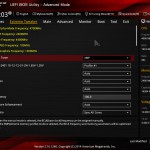
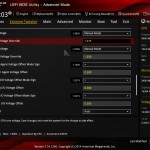
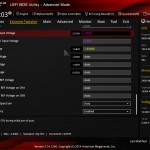
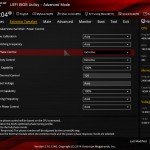
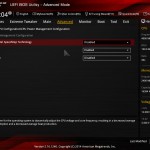
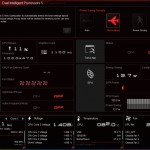
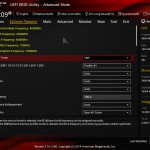
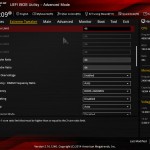
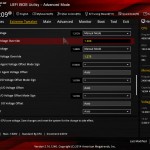
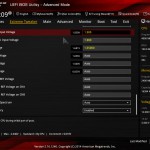
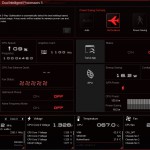
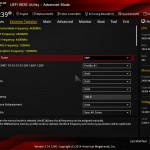
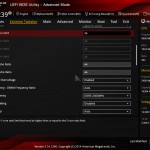
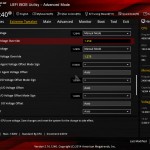
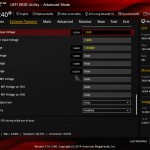

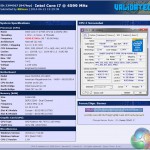

Same sh*t than 4770K. This processor was launched just for idiots that wants to stick to the top products. I’ll stick to my 4770K and won’t spend any more penny with new cpu for a long long time. Anything beyond a 4770K is to spent money in vain.
There are a couple of minor differences not mentioned in the article between the 4770K and the 4790K that while not relevant to gamers would be of note to users who do more esoteric things with their systems.
VT-d and TSX-NI are included, not sure about TSX-NI but VT-d is important to myself as I run multiple guested OS’s on top of my Linux system and having a faster base line processor that can access dedicated hardware is quite a bonus over its nearest equivalent 4770; it also runs a faster inbuilt GPU (not a gamer so the ability to run 3 dedicated screens direct from the MB is useful) as to how much the aforementioned actually improves things in the real world over numbers on the page is a debate as old as the PC industry and a multitude of incremental updates.
You missed out an option that a lot of people new to overclocking might make use of, im talking about the now pretty much universal motherboard one press self overclock. I’d like to see what overclock the onboard tools like Asus 4 way optimisation etc give.
Think you lucked out with that sample, I’ve read a few reviews and spoke to a few people who are really struggling to justify the necessity for the refresh although temperature never seems to be an issue.
Its finally time to upgrade my i7-920 system from the end of 2008. I’m thinking of getting this and just leaving it at stock. It doesn’t seem like there’s much upside left on he table anyway, and the introduction leaves me feeling there may be long term longevity benefits to just leaving it at spec.
disappointing overall, I was hoping these would all hit 5ghz with minimal effort and good cooling. maybe next time…
Not one I will be upgrading too. Good article, well written. 4770k for me has been disappointing as well. mine only hits 4.4ghz no matter what I do with it. I think Kitguru actually got a good sample of the 4790k, a lot of them online are not overclocking past 4.5ghz.
good overclocking info. I managed to get my 4790k to 4.6ghz as well, interesting stuff on the degradation. wont be pushing mine any higher,.
My 2500k has been overclocked to 4.5 GHz with corsair h60 cooler, the only reason I scaled it down to 4.3 was that I couldn’t deal with the noise of the fans working faster.
Just wondering as per my earlier post if anyone at Kitguru fancies trying Asus 4 way optimization (you do have a advertising banner on the main page). I’d love to see how much the one press technology has advanced and how it works with the Devils Canyon processors. I know its asking a bit much but it would be nice to see it tried out with a few mobo manufacturers.
Hi Lelisevis,
Thanks for the feedback.
We analyse the motherboard’s automated overclocking performance as standard for our motherboard reviews. Our motherboard test system is set to be updated with the 4790K from here onwards.
We will have full reviews of the Asus Maximus VII Hero and Ranger boards soon, therefore the automated overclocking will be analysed in their reviews.
Luke
Thanks Luke, i’ll keep my eyes peeled for the reviews, I must be getting old but i’d be quite happy with the one press overclock if it yields decent results, my days of increasing 1mhz at a time till 3am in the morning are behind me. Its a cup of cocoa and bed for me these days.
This is pretty disappointing. Seems there’s something wrong internally. I’ve heard people say it’s because it’s on 22nm, but that doesn’t explain why Haswell (and Devil’s Canyon) seem to be even worse than Ivy Bridge 22nm for overclocking.
I guess moving forward it makes sense that CPUs will start to have more cores and perhaps lower clock speeds to keep power consumption down. Maybe AMD had the right idea but poor execution… we need 8-core CPUs @ 3GHz or something.
I’ve a 2600K@5Ghz with off-the-shelf watercooling. It runs hot on full load, often 90+ in summer and it’s been like that for close to three years and will run Prime95 all day long. I’m looking for an excuse to upgrade but it’s looking like the 2600K will be good for another year. It seems incredible that a three year old CPU can still hold it’s own with Intels latest.
this is way faster and better then any 4770k. POS 4770k can suck a dizznik
You have to remember, that the new line of CPU’s 4xxx series, were not intended to be a frequency-deamon. BTW Ghz has nothing to do with speed. I have 4Ghz chips that have passmark-scores around 1,000, and others with lower Ghz that perform with passmark scores over 12,000. What changed is the GPU-component and the instruction-sets. They stripped out all the old MMX, SSE, etc… and used the faster and updated instruction sets.
Translation, everything you do is now faster. Mostly the memory-read/write to RAM and to the hard-drives and instructions to the PCIe-busses. Having the cooler-running and more top-adaptive threading control and independent core-frequency, is where we see “powered value”. They produce the same powerful operations, with less power, with less internal damage, and with greater potential longevity as programs start using this stuff. (Pulling away from the old dead instructions.)
This is the cusp of the technology edge. The plateau before the next generation has funding and a market. This is the result of why the 3xxx series was made, for consumers. These are the fine-tuned, adaptive and solidified versions of the past generation. Sure, you don’t want to buy one if you just got one last year… These were not made for you. These were made for those of us who waited for what your funding contributed towards. Thanks for funding our future. Now we are funding the next generation, which, undoubtedly, you will buy and we will not.
These are more snappy, more responsive, and more advanced than the prior series of 3xxx, and well worth every penny spent on them.
I hear this. I never bought into degredation, Atleast at such low voltages. It is a case by case basis largely however. My 4770k had little to none. That said it topped out at 4.7. My 4790k I had 100 runs of x264 at 1.42/4.9ghz which turned into 1.45 v which then turned Into 1.52v wouldn’t stabilize it. This is all in the course of about a month. Insane. My 4770k on the other hand ran 4675 at 1.43v which turned into 1.46v which was stable for about a year until I sold it.
I think it is a combo of particular chip, voltage, and frequency.
It’s worth noting that the same chip I couldn’t get prime stable at 1.42/4.9 is the same chip that I could game on at 5.0 when 1.45v wouldn’t get 4.9 stress test stable.
A lot of guys think they’re stable, but for me.. It seemed encoding was a tipping point and I didn’t care if I could use my PC reliably for everything I do but I risked a hard lock during encoding .
The solution was 4.8 and now I’m stable at 1.37 (which is irritating since even 1.52 wouldn’t stabilize 4.9 after the first few weeks)
I wouldnt run any Intel chip at 1.4 let alone 1.52. get what ever yuo can get at 1.35 MAX and call it a day.